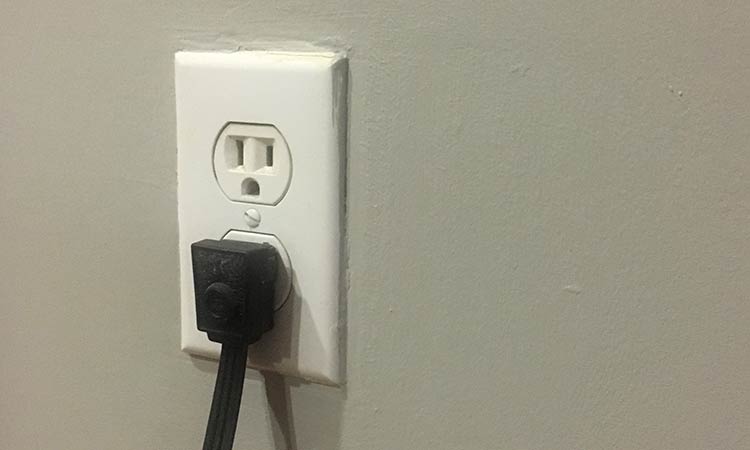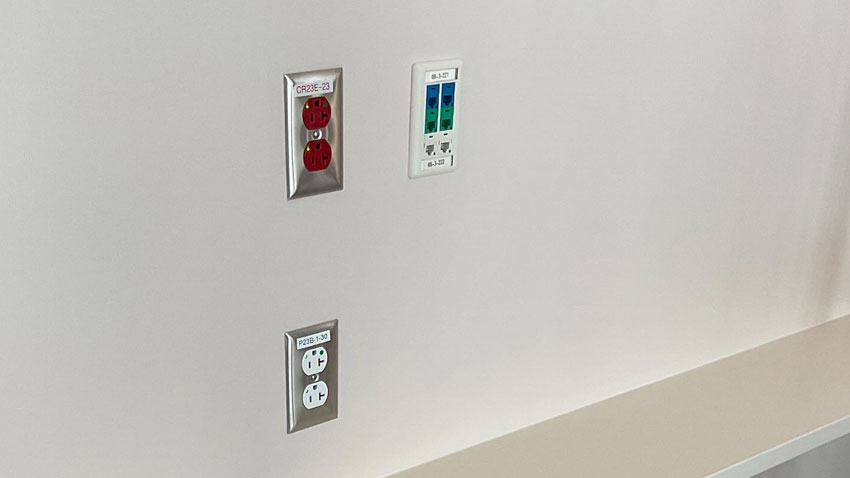There is an age-old debate about whether electrical receptacles should be mounted with the ground pin up or down. Unfortunately, there is not a fully accepted answer. However, it is commonly accepted that the National Electrical Code (NEC) of the United States (NFPA 70), does not provide any specific direction for the orientation of the ground pin. We recommend checking local codes to make sure there aren't any local code requirements and then confer with the facilities department to see if they have a preference.
Some theories about the orientation of an electrical receptacles:
- Receptacles should be oriented with the ground pin up because if the plug comes slightly loose and a metal object were to fall from above, the ground plug, which usually does not carry current, would deflect the object so that it would not hit is live prongs. It is accepted that this idea began in health care facilities where many tools used for patient care are metal. The story goes that hospitals were wired by union electricians and as the unions grew the practice spread to other types of buildings.
- Receptacles should be oriented with the ground pin up because this pin is longer and the plastic around the plug is meatier, so it will help to keep the plug inserted in the outlet.
- Receptacles should be oriented with the ground pin down because a person grabbing the outlet will have their index finger at the bottom side of the plug and the index finger sticks out further than the thumb. Having the ground down will keep a person's index finger from touching the live pins.
- Receptacles should be oriented with the ground pin down because many common household items such as nightlights, timers, and battery chargers are oriented with the ground pin down. In addition, GFCI receptacles, which have text on the reset and test buttons, are oriented with the ground pin down (and the text readable).
Unfortunately, a quick internet search provides comments that easily debunk any of these theories.
One consideration is the appliances or devices that will plug into the outlet. Many residential appliances have cords that are oriented with the ground pin down. For example, look at the refrigerator plug below. This is oriented with the ground pin down and plugging the appliance in with the ground pin up would put stress on the cable, which could cause damage. In this case, the only way to install the outlet is with the ground pin down.

On the other hand, many institutional buildings like laboratories and hospitals mount their receptacles with the ground pins up as you can see in the photo below.

So Which Way Should The Receptacle Ground Pin Go?
The most basic answer is that it doesn't matter which way your electrical receptacles are oriented. Select the strategy that best works for you and the devices that are plugging into the outlet. Of course, you should check with an electrical engineer or electrician to confirm there isn't any special local code that differs from NFPA 70. Also, check with the facilities maintenance or operations team to see how they prefer them to be installed. Keep in mind that it is relatively easy to flip an outlet if you get it wrong, but changing an entire building will be costly.


